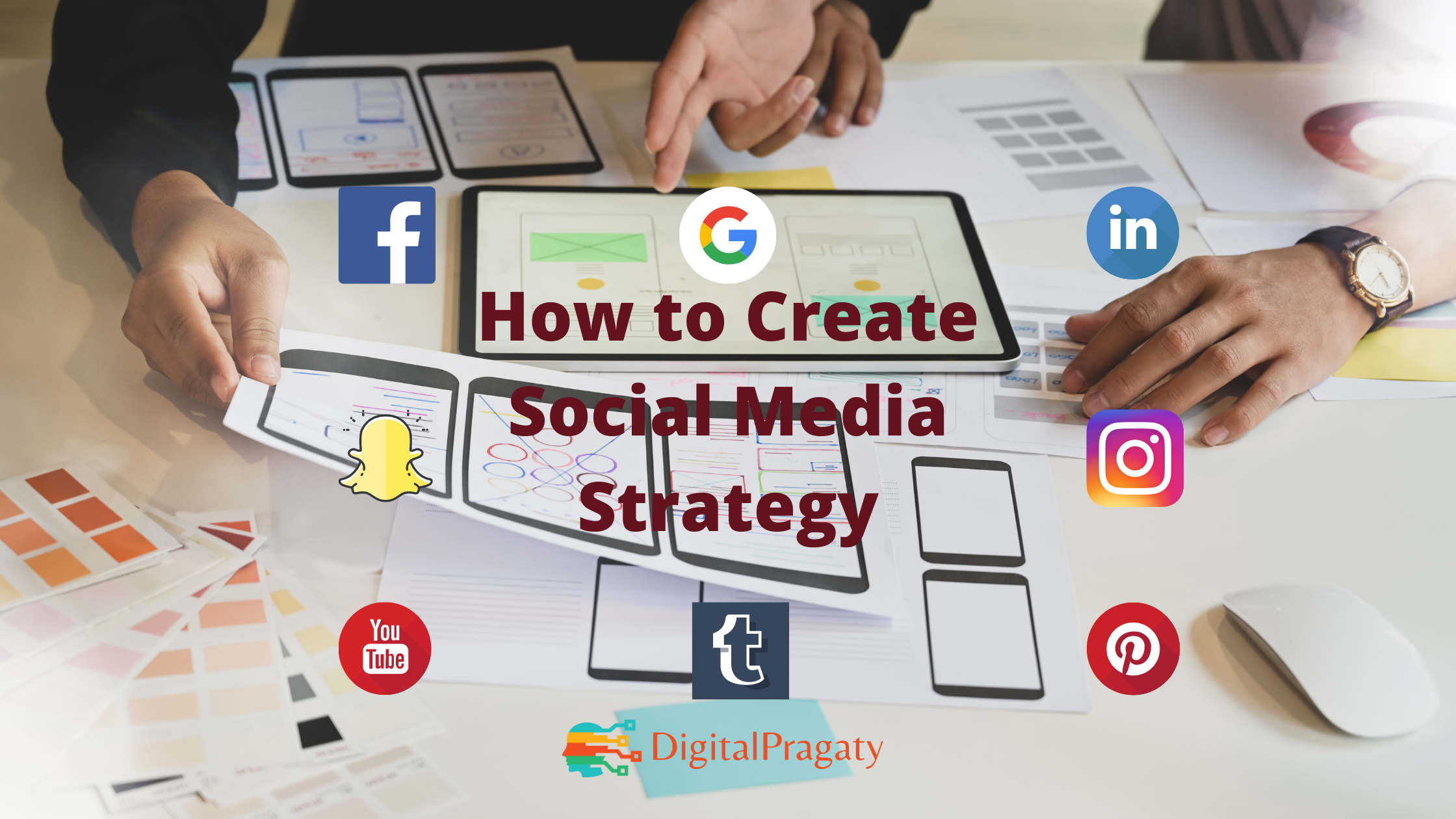
How to create Social Media Strategy
Before we create a social media strategy, first of all, we have to understand that what is Social Media Marketing, and what is its importance in today’s generation?
The answer is Social Media Marketing (SMM) refers to techniques that help you to target the social media networks to spread your brand awareness or promote every individual product. It is the most important part of Digital Marketing. It is important for all the companies in many ways such as: –

- It helps them to connect with their audience.
- It helps them to build their own brand.
- It helps them to increase their sales.
- It helps them to bring more website traffic.
Now, let’s talk about how to create a Social media strategy? A Brief strategy will help your brand with its goal with a sense of purpose. Some strategy is given here step-by-step social media marketing guidelines to help you recognize your social goals, engage the audience, and improve your results:
1. Set relevant social marketing goals: –
First thing is that you need to figure out what you want out of social media.
Increase your brand awareness- To create good and long-lasting brand awareness, avoid lonely publishing promotional messages. Instead, focus on content that emphasizes your personality or values first.

Increase in leads and sales- Whether online or offline, followers are not going to make social purchases by mistake. For example, are you about alerting customers about new products and promos?
Grow your brand’s audience- Bringing new followers into the fold means finding ways to introduce your brand to folks who haven’t heard of you before.
Increase your community engagement- Find ways to grab the attention of your current followers. This means experimenting with messaging and content.
Increase web traffic- In case you are focused on generating leads or traffic to your site, social media is the platform that can keep it going. Regardless of the advertised posts or social promotions, watching out for the conversions and URL clicks can assist you with deciding the better of your ROI from social media platforms.
2. Do research on your target audience-
Making assumptions is a dangerous game for marketers. Target your audience with according to the locality, age, gender, financial condition, etc. and track them according to their needs.

3. Establish your most important Benchmarks-
Your Social media strategy has to be information-driven, regardless of what you’re advertising. That means focusing on the social media benchmarks that matter most. The hiding of “likes” on Facebook and Instagram should be an eye-opener for businesses today. Rather than focus on vanity metrics, brands are tasked with dig into data that aligns directly with their goals. Benchmark Marketers should keep an eye on the following things: –
a) Reach- Post reach is the number of new users who saw your post. Do you have to check how far is your content spreading across social? Is it reaching the user’s feed? Tracking reach is arguably more important than ever.
b) Clicks- It refers to the number of clicks on your content, company’s name, or your logo. Link clicks are disapproving toward understanding how many users move through your marketing channel. Tracking clicks per campaign are most needed to understand what operates curiosity or cheer people to buy.
c) Engagement- The total number of social interactivity divided by the number of impressions. For engagement, it’s about watching who interacted and if it was a good ratio out of your total reach then it is best for you.
d) Hashtag performance- Which type of Hashtag you used on your own site? Which hashtags are most linked with your brand? Or what hashtag created the most engagement? You should regularly work on it.

e) Organic and paid likes- Beyond a standard like count, these interactions are attributed to paid or organic content. For channels like Facebook, organic engagement is much harder to gain grip, that’s why many brands turn to Facebook Ads. However, earning organic likes on Instagram is not entirely as difficult. Knowing these types of differences can help you budget both your ad spends and the time you invest in different formats.

4. Analyze your competition-
Before you start creating content, you should have a good idea of what your competitors are doing. Looking at your competition’s social media channels will directly inform your own social media promotion strategy. You should adopt the same industry, different strategies.
The simplest way to find competitors is through a simple Google search. Look up your most relevant keywords, phrases, and industry title to see who shows up.
5. Create your own engaging content-
Your social media marketing strategy is obviously centered on content. At this point, you should have a good idea of what to publish and what not to publish based on your goal and brand identity. You should regularly post the relevant and best content on your social media page following content such as post highlights of your products and post storied related to your products. Visual content is to marketers and the people they want to reach.

6. Assess your results and improve them-
By now you should have a big-picture understanding of your social media strategy. However, it’s important that you’re able to adapt your strategy as you progress throughout the year. Without continuously examine your efforts, you’ll never know how one campaign did over another. There’s no denying that a lot of social media is a matter of trial-and-error. But you should regularly improve your results.
7. Communicate goals, challenges and wins with your team-
To wrap things up, consider that coordinated effort is a higher priority than at any other time for social marketers. Our Index data notes that there’s a growing expectation for marketers to report on results and ROI with their higher-ups. Doing so not only holds you accountable for your efforts but also highlights the role and results that your social strategy is able to produce.



